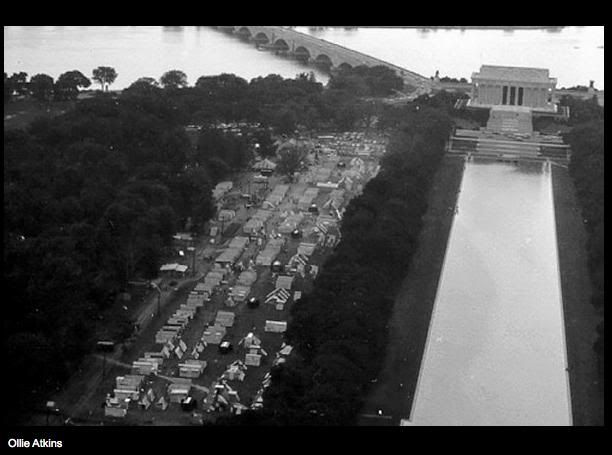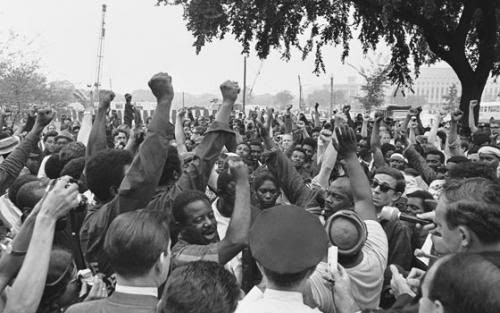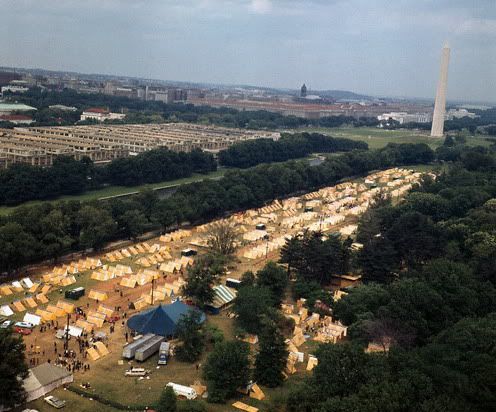THIS is what the 1% does NOT want to see this Spring & Summer. [View all]
The Poor People's Campaign of 1967
Organized by Martin Luther King, Jr. and the Southern Christian Leadership Conference, the Poor People's Campaign
addressed the issues of economic justice and housing for the poor in the United States[1] King said, “We believe the
highest patriotism demands the ending of the war and the opening of a bloodless war to final victory over racism
and poverty”.[2]
http://en.wikipedia.org/wiki/Poor_People's_Campaign
Their immediate aim was to secure federal legislation ensuring full employment and promoting the construction of
low-income housing to raise the quality of life of the nation's impoverished citizens.
The SCLC planned a nationwide march on Washington on April 22, 1968, to focus the nation's attention on this issue and
particularly to pressure Congress to pass legislation to address the employment and housing issues. Unlike earlier
marches, SCLC leaders planned the creation of Resurrection City, a giant tent city on the Mall in Washington, D.C.,
where demonstrators would remain until their demands were met. When Dr. King was assassinated in Memphis on
April 4, 1968, movement leaders debated whether to go forward with the planned demonstration. They chose to
continue the march with King's lieutenant, Rev. Ralph Abernathy, as its new leader. The march date was postponed
to May 12, 1968, though a few hundred people arrived in Washington on the original date. The first week, May 12-29,
brought a wave of nearly 5,000 demonstrators. During the second week Resurrection City was completed.
The protestors, people from a wide range of racial, ethnic, and socioeconomic backgrounds--Native Americans from
reservations, Latinos from the Southwest, impoverished whites from West Virginia, as well as rural and urban blacks--
came together and spread the message of the campaign to various federal agencies. They also disrupted life in
Washington to try and force the government to respond. At its peak, the number of protestors reached nearly 7,000
but still far short of the expectation of 50,000 people.
The march was also marred by weather and leadership divisions. An unusual downpour of rain made the ground
turn to mud causing the tents to weaken, and eventually forcing people to leave. Tension among the demonstrators
themselves caused violent outbreaks and undermined the effectiveness of PPC leadership. The assassination of
Senator Robert Kennedy, a presidential aspirant and one of the PPC's principal supporters in Congress, on June 5, 1968,
sealed the fate of the campaign. Resurrection City closed two weeks later on June 19, 1968.
http://www.blackpast.org/?q=aah/poor-peoples-campaign-december-4-1967-june-19-1968
And the negative impact of the assassinations of Martin Luther King Jr. and Robert Kennedy illustrate why OWS &
Occupy DC must remain as "leaderless" as possible.





